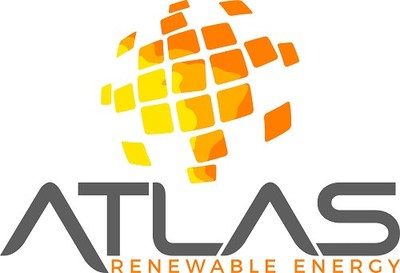[ad_1]
Elon Musk and Tesla offer a gripping corporate tale and coveted electric cars, but when it comes to climate change, they are a rather minor subplot.
Why it matters: Numerous other factors and technologies influence whether electric cars are actually green. And no matter how green they are, they’re still just one, relatively small part of a many-sided, global problem.
Let’s put aside the whiplash news of Musk mulling via Twitter about taking Tesla private and then deciding not to over the weekend. Here are some basic numbers.
Tesla announced last month it had passed the 200,000 mark for total vehicles sold in the U.S. Third Way, a centrist think tank, crunched some numbers for me to put that figure into context.
Here’s how to think of the carbon dioxide emissions avoided by Teslas versus clean sources of electricity:
- A nuclear reactor replacing coal = 541,353 Teslas.
- A nuclear reactor replacing natural gas = 294,041 Teslas.
- Natural gas replacing one coal plant = 98,940 Teslas.
- 100-megawatt wind farm replacing natural gas = 8,267 Teslas.
- Five-megawatt solar farm replacing natural gas = 320 Teslas.
It takes a lot of Teslas to equal the emissions savings of a carbon-free nuclear reactor, and to a lesser extent other clean energy sources.
Lindsey Walter and Josh Freed, the Third Way analysts who did this analysis, stressed that this doesn’t negate the importance of Tesla. But it does show how electric cars, and one company in that category, are but one highly dependent piece of the puzzle in addressing climate change. It also illustrates how difficult it is to green the transportation sector.
For the record, a Tesla spokesperson said in a statement: “Tesla exists for one reason: to accelerate the world’s transition to sustainable energy.”
- The spokesperson went on to say that Tesla is moving the whole auto industry toward electrification.
- “It would be a shame if anyone reading this article came away with the false impression that driving an electric vehicle or owning energy storage or solar products doesn’t have a meaningful effect on climate change.”
Electric vehicles have a green reputation, but an important reminder: they are only as green as the electricity they are using.
The International Energy Agency has found wide ranges in electric cars’ net climate benefits over internal combustion engines, according to its 2018 outlook. That’s after factoring in how carbon-intensive a country’s electricity is, as well as the emissions associated with batteries and other manufacturing of electric cars.
- The carbon benefits of electric cars over petro-fueled ones drop from 50{0b7da518931e2dc7f5435818fa9adcc81ac764ac1dff918ce2cdfc05099e9974} to 30{0b7da518931e2dc7f5435818fa9adcc81ac764ac1dff918ce2cdfc05099e9974} in Europe when adding manufacturing emissions, and even lower in countries that get more electricity from fossil fuels, like the U.S.
- When considering manufacturing emissions, electric cars could even result in a net increase in CO2 emissions in countries like India and China with heavy fossil-fuel power mixes, the IEA says.
Projections show electricity grids around the world getting greener in the decades to come, so electric cars are poised to offer bigger benefits. But it remains an open question how quickly that occurs in China, and to what degree it does at all in India — the two countries that matter most when it comes to future greenhouse gas emissions.
- The avoided global carbon dioxide emissions of all electric cars in 2017 was 29.4 million metric tons, according to the IEA.
- By 2030, the IEA predicts that number could increase to between 177 to 514 million metric tons.
- That range depends on a number of factors, including government policies that support adoption of electric cars and how quickly electricity grids become cleaner.
These are significant savings coming from a single, nascent technology, but they’re still a relative small piece of the climate puzzle.
- For example, the carbon dioxide emissions coming just from China’s industrial sector making cement, steel and other materials is around 3.3 billion metric tons, according to data compiled by the environmental group Clean Air Task Force.
Tesla is pivotally important to electric cars gaining steam in the U.S. and around the world. For Musk and others who own shares in Tesla, it’s probably a good investment.
That’s not the same as Tesla and Musk being pivotally important to addressing climate change. It’s like saying: I’m going to lose weight by eating healthier side dishes. You’re comparatively healthier for that side, but you’re not going to lose much weight without eating healthier for whole meals.
The puzzle of addressing climate change will need clean-energy technologies of all stripes. Musk is contributing with advancing battery technologies and SolarCity, a solar energy company that’s a Tesla subsidiary. But there are a lot of other companies doing big things with much lower profiles. Here are three:
- NextEra, the world’s largest operator of wind and solar farms, per this recent WSJ profile.
- NuScale Power, which is going through government permitting now to build what is poised to be America’s first advanced nuclear reactor.
- NET Power, which is working to commercialize technology capturing carbon emissions from natural-gas plants.
The CEOs here — James Robo, John Hopkins and Bill Brown, respectively — may not be going to space like Elon Musk. But down here on Earth, they’re still having a pretty big impact with the planet.
[ad_2]
Source link



















